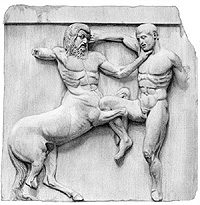“In Maryland in the eighteenth century there were at least two classes who had little or no hope of ever acquiring control over their own lives. These were servants and slaves, whose job was to produce wealth for the more fortunate.3”
-C. Ashley Ellefson
I would like to begin by thanking the author for this selfless, unpublished work.
In this meticulously annotated and well-researched labor of a lifetime, which Ellefson, seems to have prepared for a professor, the author sticks with the anachronistic convention that white bondsmen were servants and black bondsmen were slaves, as his field requires. However, through his many examples and quotes and despite his assertion that blacks must have had it worse than whites as written just before an admission that he had no substantiating proof, he proves precisely that whites and blacks, the whites called servants [not indentured servants] and the blacks called negro [suck as Negro Joe, Negro Dick, etc.] suffered the same vast, deep and cruel punishments, such as:
“—fines, imprisonment, servitude, banishing from the province, whipping, pillorying, stocking, branding hands, boring tongues, cropping or nailing ears (or both), hanging, gibbeting, and quartering ...”
There is proof of legislation against the mistreatment of servants yet not against the mistreatment of slaves. Yet there is voluminous proof that the masters of the servants ignored all such attempts to control their conduct in regard to their servants on the part of the colonial administration. There were such laws as lash limits, for instance, but no law as to how many times you could whip your servant. So even if abiding the law, a master might whip his man three times at 10 lashes each instead of once at 30, a lash right reserved for a gaoler or other official. The author did discover the 10 days to 1 recapture rule in Maryland, which seems to have been unique to this catholic state, in terms of determining term extensions for escaped servants.
While there is no evidence found that blacks were treated worse as academic convention holds, there is also no evidence that whites were treated worse as Hoffman, held, based on the assumption that shorter terms of servitude for whites would drive the master to greater cruelties. Rather, the evidence is that both races were treated in an equally horrible manner. This absolutely concurs with the historical evidence that whites and blacks in bondage helped each other escape and banded together to fight their masters when possible.
Why cannot the excessive cruelty of being bond for ever, be enough? Why is it not enough that blacks were held longer than whites? [1] Why must they also have been treated more cruelly? This urge is an attempt to shore up the American belief that slavery was the result of a racial prejudice confined to that time, not, as it was, the logical conclusion of the plantation system—the fact that English America was never about freedom, but exploitation, the freedom of the few to exploit the many. The keepers of our national history cannot permit this truth to escape the prison of lies they have woven about it, lest the Founding Fathers cult be seen for the sham it is.
Court rulings against cruel masters are cited, such as the command that an iron lock be removed from a servant boy’s mouth, who presumably had it bolted shut! What the author proves beyond the shadow of a doubt is that Maryland of the 1700s was a medieval hell on earth for anyone who did not own property and fell into the service of a master. Although it should be self evident to all that the only thing required to make a slave is a master, it yet eludes us with the semantic academic dance that cloaks much of our hidden history, a history that C. Ashley Effelson spent five decades plumbing, to produce a 99 pages document now buried in a state archive. The sourcing of this insightful document is an invaluable aid to researching the subject and the author’s balanced perspective was refreshing.
Notes
1. Virtually all bondsmen died during or because of their labors. One of the reasons—based on the condition of released servants recorded by their masters—for not holding servants as long as possible was the fact that he was pretty much spent after 7-14 years, in an age when 35 was old. While 95% of 17th century servants were worked to death before freedom, over half seem to have survived their bondage in the 1700s, only to become penniless vagabonds, without shoes, tools money or home, only a trade, keeping them in the servant class. If they could not find work and were therefore found guilty of debt, vagrancy or homelessness they could be legally abducted and sold again. In the end, nobody wanted them as they died by the roadside like the English sailors, discharged without pay after the Napoleonic War in 1816. The same was true of black servants, who, when they were no longer productive [such as the grandmother of Frederick Douglas] were placed without food in a small, unheated hut in the forest in winter, to die cold and alone. Our historians are thus charged with suppressing the truth that poverty was a capital offense in Plantation America, beginning with describing it as Colonial America, instead of what it was, a vast network of prison farms.
Under the God of Things











